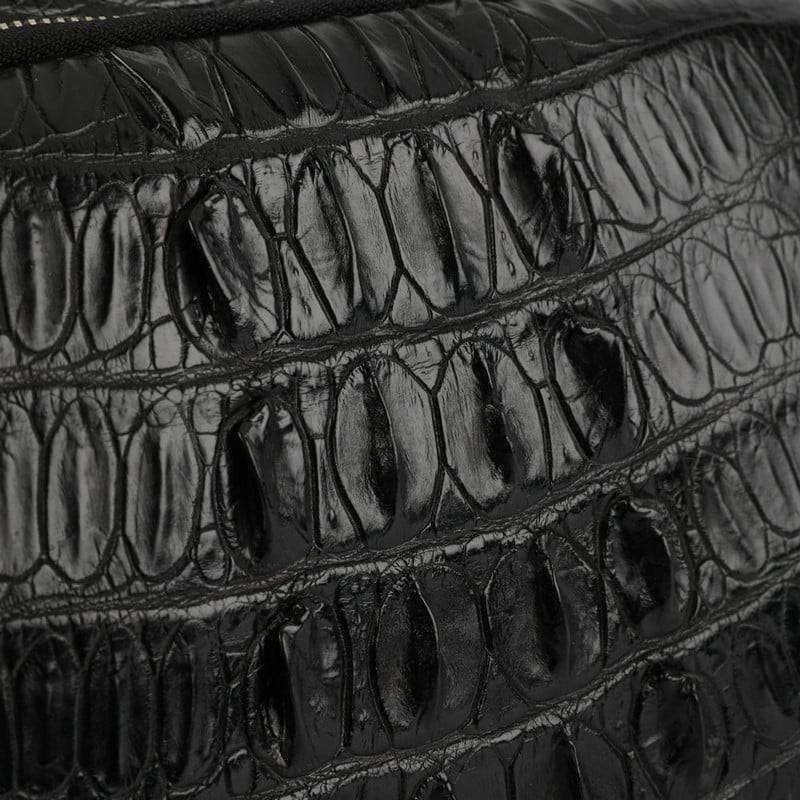Uncategorized
How to Process Crocodile & Alligator Skin
Curing Crocodile & Alligator Skin
The first step in processing crocodile and alligator hides is curing, which is the preservation of the alligator skin to prevent them from rotting. Curing can be done by salting or brining the skins, depending on the preference of the tanner. Salting involves rubbing salt into the flesh side of the skins and stacking them in piles for several days. Brining involves immersing the skins in a salt solution for a few hours or days. Both methods aim to draw out the moisture and bacteria from the skins and create an unfavorable environment for decay.
The quality of curing is very important for the final product, as any damage or deterioration of the skins during this stage can affect their appearance, strength and value. Skins that are poorly cured can develop holes, stains, cracks or mold, which can reduce their grade and price. Therefore, proper curing requires careful handling, adequate salt or brine concentration, appropriate temperature and humidity, and regular inspection of the skins.

Segmenting Crocodile & Alligator Skin
The next step in processing crocodile and alligator hides is segmenting, which is the cutting of the skins into different parts according to their use and value. The most valuable part of the skin is the belly, which is smooth, flat and uniform in texture and color. The belly is usually used for high-end leather goods, such as handbags, belts, shoes and wallets. The size and width of the belly vary depending on the species and origin of the animal. For example, farmed crocodiles tend to have wider bellies than wild ones, while Nile crocodiles have longer bellies than Porosus crocodiles.
The less valuable part of the skin is the hornback, which is rough, bumpy and irregular in texture and color. The hornback is usually used for lower-end leather goods, such as boots, hats, jackets and accessories. The hornback has more character and dimension than the belly, but it is also more difficult to work with and less durable. The hornback can be further divided into backstrap and flank cuts.
The least valuable part of the skin is the secondary area, which includes the snout, feet and tail tip. These parts are often used for small leather goods, such as card holders, key rings, bracelets and charms. These parts have unique features and shapes that can add interest and variety to leather products.
Tanning Crocodile & Alligator Skin
The final step in processing crocodile and alligator hides is tanning, which is the conversion of raw skins into leather by chemical treatment. Tanning stabilizes the collagen fibers in the skins and makes them resistant to water, heat, microbes and insects. Tanning also enhances the appearance, softness and flexibility of the leather.
There are different types of tanning methods, but one of the most common ones for crocodile and alligator leather is chrome tanning. Chrome tanning uses chromium salts to tan the skins in large rotating drums. Chrome tanning produces leather that is blue-gray in color (hence the name wet-blue), which can then be dyed to various colors and finishes.
Tanning crocodile and alligator leather requires a lot of skill and experience, as each skin is unique and has different characteristics that need to be considered. Tanning also involves several steps, such as rehydrating, liming, pickling, neutralizing, dyeing, fatliquoring, setting out, drying, staking and finishing. Each step has to be done carefully and precisely to ensure a high-quality product that meets the standards and expectations of customers.
Grading Skins
Grading is a process that evaluates the quality of alligator skins based on the presence and extent of defects or damage on the surface. Grading is important because it affects the price and usability of the skins for different products.
There are different grading systems used by different tanners and buyers, but a common one is the scale from one to five, with one being the highest quality and five being the lowest. Some tanners may reject grade five skins as too low quality, while others may use them for less visible parts of products.
Grading usually takes place after tanning, because tanning can reveal or create defects that were not visible before. Tanning is a chemical process that preserves and softens the skins, making them suitable for leather production.
Defects can be caused by various factors, such as injuries, parasites, diseases, or environmental conditions. Defects can range from small scars to large holes, and can affect the appearance and durability of the leather.
One way to grade alligator skins is to divide the belly into four quadrants and count the number of quadrants that have defects. If there are no defects in any quadrant, the skin is grade one; if there is one defect in one quadrant, it is grade two; if there are two defects in two quadrants, it is grade three; and so on.
Size
Another factor that influences the price of alligator skins is their size. The bigger the skin, the more expensive it is. Unlike other leathers that are sold by surface area (square feet or square meters), alligator bellies are sold by width (centimeters).
The width is measured at the widest part of the belly, excluding the outermost half bones. The width determines how much cutting area there is for making products. The length of the skin does not affect the price, but it can be estimated by dividing the width by 6.5.
The shape of the belly can vary from square to rectangular, depending on the species and origin of the alligator. Wild alligators tend to have longer bellies, while farmed alligators tend to have shorter bellies. The shape of the belly can also affect how it can be used for different products.

